Tom Clancy - Clear and Present Danger
Здесь есть возможность читать онлайн «Tom Clancy - Clear and Present Danger» весь текст электронной книги совершенно бесплатно (целиком полную версию без сокращений). В некоторых случаях можно слушать аудио, скачать через торрент в формате fb2 и присутствует краткое содержание. Год выпуска: 1989, Жанр: Триллер, на английском языке. Описание произведения, (предисловие) а так же отзывы посетителей доступны на портале библиотеки ЛибКат.
- Название:Clear and Present Danger
- Автор:
- Жанр:
- Год:1989
- ISBN:нет данных
- Рейтинг книги:5 / 5. Голосов: 1
-
Избранное:Добавить в избранное
- Отзывы:
-
Ваша оценка:
- 100
- 1
- 2
- 3
- 4
- 5
Clear and Present Danger: краткое содержание, описание и аннотация
Предлагаем к чтению аннотацию, описание, краткое содержание или предисловие (зависит от того, что написал сам автор книги «Clear and Present Danger»). Если вы не нашли необходимую информацию о книге — напишите в комментариях, мы постараемся отыскать её.
Clear and Present Danger — читать онлайн бесплатно полную книгу (весь текст) целиком
Ниже представлен текст книги, разбитый по страницам. Система сохранения места последней прочитанной страницы, позволяет с удобством читать онлайн бесплатно книгу «Clear and Present Danger», без необходимости каждый раз заново искать на чём Вы остановились. Поставьте закладку, и сможете в любой момент перейти на страницу, на которой закончили чтение.
Интервал:
Закладка:
For now, anyway , Clark told himself. He shook his head in amazement at the placement of the truck.
"Here comes the last one." Larson pointed to headlights struggling up the gravel road.
This car was a Mercedes, a stretch job, doubtless armored like a tank – Just like the ambassador's car , Clark thought. How poetic. This VIP was also met with pomp and circumstance. There were now at least fifty guards visible. The wall perimeter was fully manned, with other teams constantly patrolling the grounds. The odd thing, he thought, was that there were no guards outside the wall. There had to be a few, but he couldn't spot them. It didn't matter. Lights went on in the room behind the truck. That did matter.
"Looks like you guessed right, boy."
"That's what they pay me for," Larson pointed out. "How close do you think that truck–"
Clark had already checked, keying the laser in on both the house and the truck. "Three meters from the wall. Close enough."
Commander Jensen finished tanking his aircraft, disconnecting from the K.A-6 as soon as his fuel gauges pegged. He recovered the refueling probe and maneuvered downward to allow the tanker to clear the area. The mission profile could hardly have been easier. He eased the stick to the right, taking a heading of one-one-five and leveling off at thirty thousand feet. His IFF transponder was switched off at the moment, and he was able to relax and enjoy the ride, something he almost always did. The pilot's seat in the Intruder is set rather high for good visibility during a bomb run – it did make you feel a little exposed when you were being shot at, he remembered. Jensen had done a few missions before the end of the Vietnam War, and he could vividly recall the 100mm flak over Haiphong, like black cotton balls with evil red hearts. But not tonight. The seat placement now was like a throne in the sky. The stars were bright. The waning moon would soon rise. And all was right with the world. Added to that was his mission. It didn't get any better than this. With only starlight to see by they could pick out the coast from over two hundred miles away. The Intruder was cruising along at just under five hundred knots. Jensen brought the stick to the right as soon as he was beyond the radar coverage from the E-2C, taking a more southerly heading toward Ecuador. On crossing the coast he turned left to trace along the spine of the Andes. At this point he flipped on his IFF transponder. Neither Ecuador nor Colombia had an air-defense radar network. It was an extravagance that neither country needed. As a result, the only radars that were now showing up on the Intruder's ESM monitors were the usual air-traffic-control type. They were quite modern. A little-known paradox of radar technology was that these new, modern radars didn't really detect aircraft at all. Instead they detected radar transponders. Every commercial aircraft in the world carried a small "black box" – as aircraft electronic equipment is invariably known – that noted receipt of a radar signal and replied with its own signal, giving aircraft identification and other relevant information which was then "painted" on the control scopes at the radar station – most often an airport down here – for the controllers to use. It was cheaper and more reliable than the older radars that did "skin-paints," detecting the aircraft merely as nameless blips whose identity, course, and speed then had to be established by the chronically overworked people on the ground. It was an odd footnote in the history of technology that the new scheme was a step both forward and backward.
The Intruder soon entered the air-control zone belonging to El Dorado International Airport outside Bogotá. A radar controller there called the Intruder as soon as its alphanumeric code appeared on his scope.
"Roger, El Dorado," Commander Jensen replied at once. "This is Four-Three Kilo. We are Inter-America Cargo Flight Six out of Quito, bound for LAX. Altitude three-zero-zero, course three-five-zero, speed four-nine-five. Over."
The controller verified, the track with his radar data and replied in English, which is the language of international air travel. "Four-Three Kilo, roger, copy. Be advised no traffic in your area. Weather CAVU. Maintain course and altitude. Over."
"Roger, thank you, and good night, sir." Jensen killed the radio and spoke over his intercom to his bombardier-navigator. "That was easy enough, wasn't it? Let's get to work."
In the right seat, set slightly below and behind the pilot's, the naval flight officer got on his own radio after he activated the TRAM pod that hung on the Intruder's center-line hardpoint.
At T minus fifteen minutes, Larson lifted his cellular phone and dialed the proper number. " Señor Wagner, por favor ."
" Momento ," the voice replied. Larson wondered who it was.
"Wagner," another voice replied a moment later. "Who is this?"
Larson took the cellophane from off a pack of cigarettes and crumpled it over the receiver while he spoke garbled fragments of words, then finally: "I can't hear you, Carlos. I will call back in a few minutes." Larson pressed the kill button on the phone. This location was at the far edge of the cellular system anyway.
"Nice touch," Clark said approvingly. "Wagner?"
"His dad was a sergeant in the Allgemeine-SS – worked at Sobibor – came over in forty-six, married a local girl and went into the smuggling business, died before anyone caught up with him. Breeding tells," Larson said. "Carlos is a real prick, likes his women with bruises on them. His colleagues aren't all that wild about him, but he's good at what he does."
"Christmas," Mr. Clark observed. The radio made the next sound, five minutes later.
"Bravo Whiskey, this is Zulu X-Ray, over."
"Zulu X-Ray, this is Bravo Whiskey. I read you five-by-five. Over," Larson answered at once. His radio was the sort used by forward air controllers, encrypted UHF.
"Status report, over."
"We are in place. Mission is go. Say again, mission is go."
"Roger, copy, we are go-mission. We are ten minutes out. Start the music."
Larson turned to Clark. "Light her up."
The GLD was already powered up. Mr. Clark flipped the switch from standby to active. The GLD was more fully known as the Ground Laser Designator. Designed for use by soldiers on the battlefield, it projected a focused infrared (hence invisible) laser beam through a complex but rugged series of lenses. Bore-sighted with the laser system was a separate infrared sensor that told the operator where he was aiming – essentially a telescopic sight. "Great Feet" had a fiberglass cargo box over its load area, and Clark trained the crosshairs on one of its small windows, using the fine-adjustment knobs on the tripod with some delicacy. The laser spot appeared as desired, but then he rethought his aiming point and took advantage of the fact that they were slightly higher than their target, respotting his aim on the center of the vehicle's roof. Finally he turned on the videotape recorder that took its feed from the GLD. The big boys in D.C. wanted to count coup on this one.
"Okay," he said quietly. "The target is lit."
"The music is playing, and it sounds just fine," Larson said over the radio.
Cortez was driving up the hill, having already passed a security checkpoint manned by two people drinking beer, he noted disgustedly. The road was about on a par with what he'd grown up with in Cuba, and the going was slow. They'd still blame him for being late, of course.
It was too easy, Jensen thought as he heard the reply. Tooling along at thirty thousand feet, clear night, no flak or missiles to evade. Even a contractor's validation test wasn't this easy.
"I got it," the B/N noted, staring down at his own scope. You can see a very, very long way at thirty thousand feet on a clear night, especially with a multimillion-dollar system doing the looking. Underneath the Intruder, the Target Recognition and Attack Multisensor pod noted the laser dot that was still sixty miles away. It was a modulated beam, of course, and its carrier signal was known to the TRAM. They now had positive identification of the target.
Читать дальшеИнтервал:
Закладка:
Похожие книги на «Clear and Present Danger»
Представляем Вашему вниманию похожие книги на «Clear and Present Danger» списком для выбора. Мы отобрали схожую по названию и смыслу литературу в надежде предоставить читателям больше вариантов отыскать новые, интересные, ещё непрочитанные произведения.
Обсуждение, отзывы о книге «Clear and Present Danger» и просто собственные мнения читателей. Оставьте ваши комментарии, напишите, что Вы думаете о произведении, его смысле или главных героях. Укажите что конкретно понравилось, а что нет, и почему Вы так считаете.
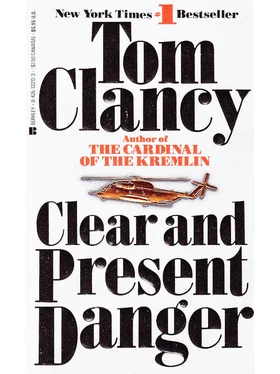

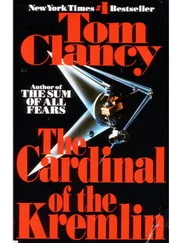
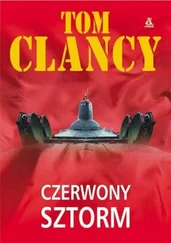
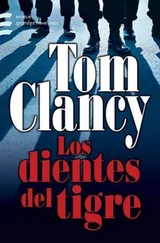
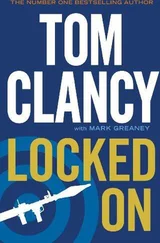
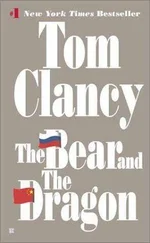
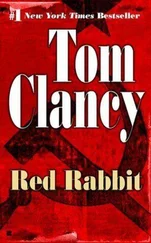


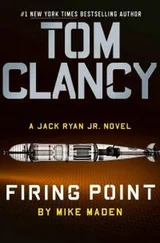
![Александр Ирвин - Tom Clancy’s The Division 2. Фальшивый рассвет [litres]](/books/417744/aleksandr-irvin-tom-clancy-s-the-division-2-falsh-thumb.webp)